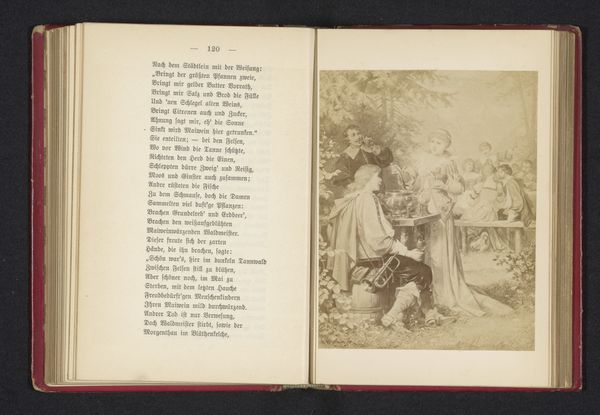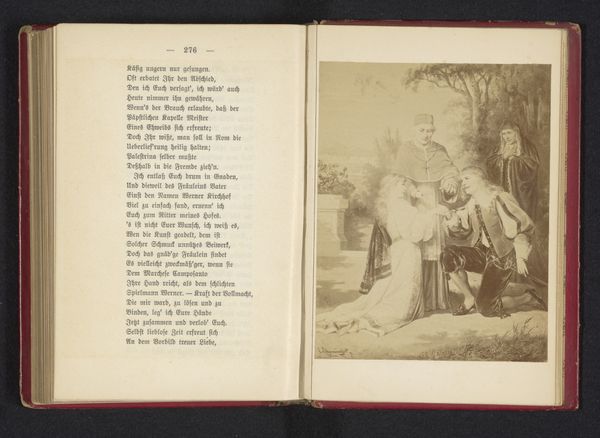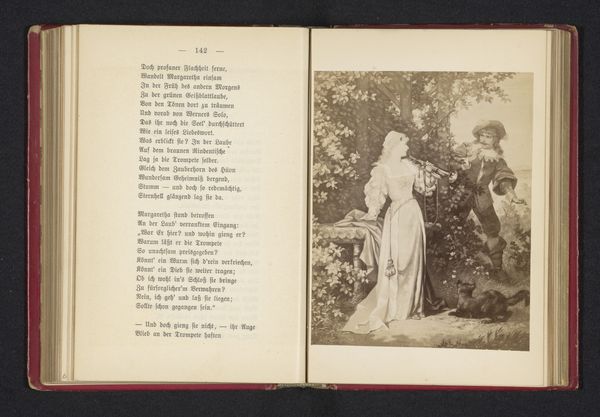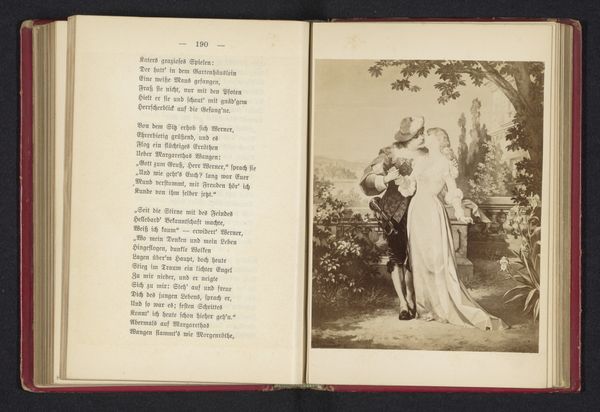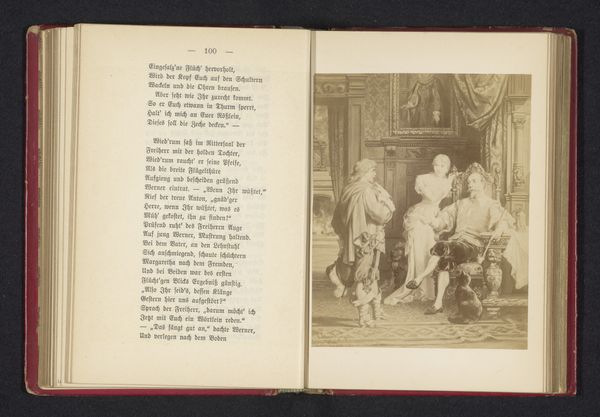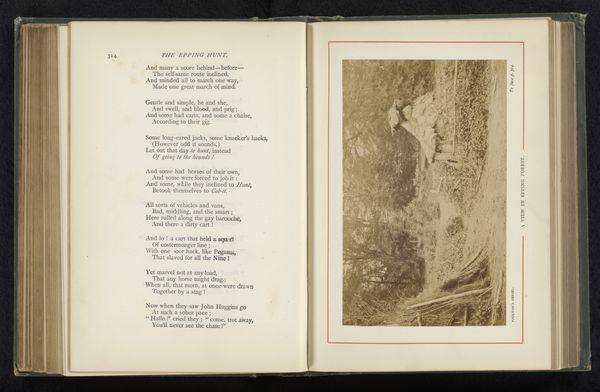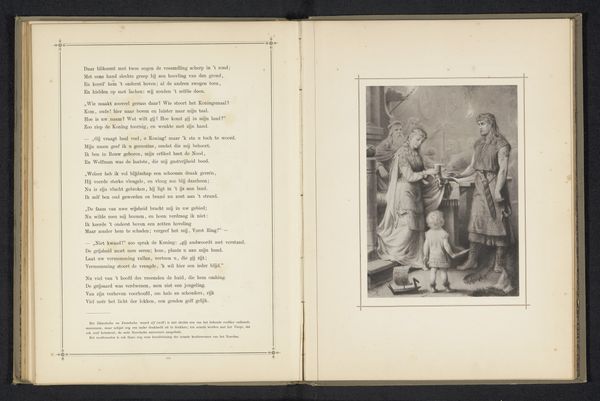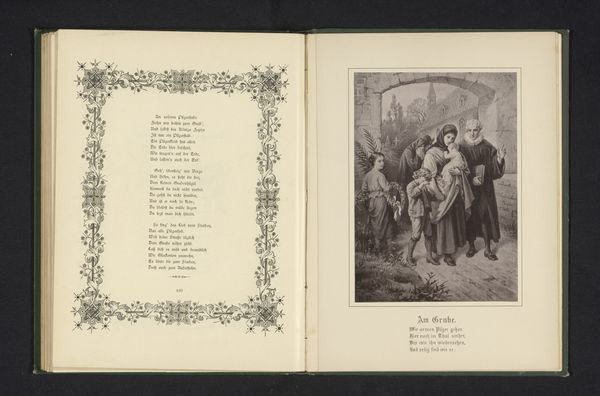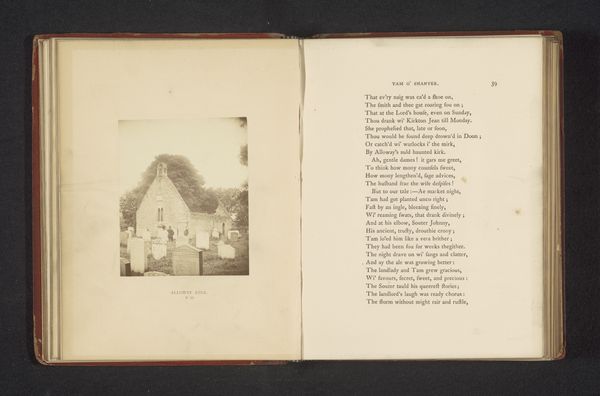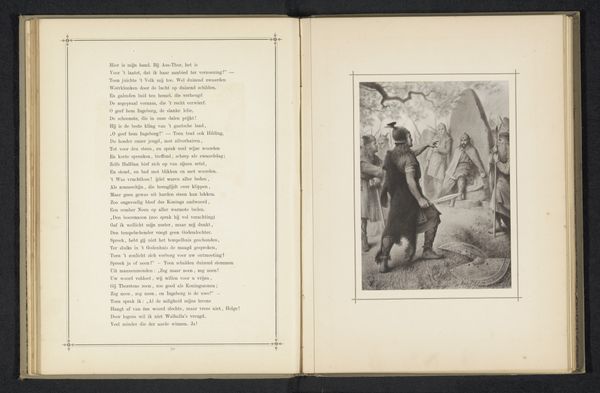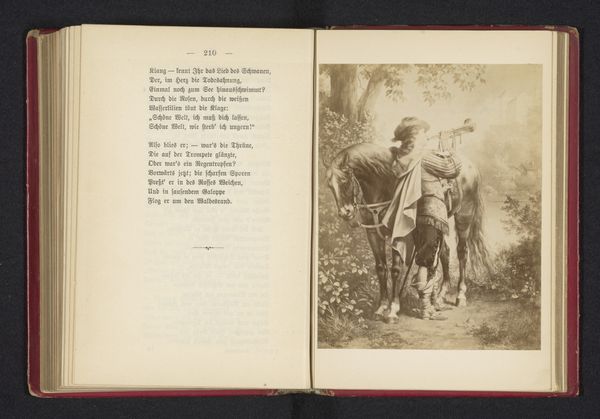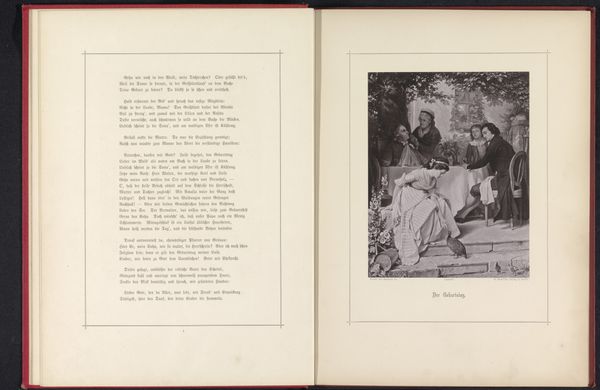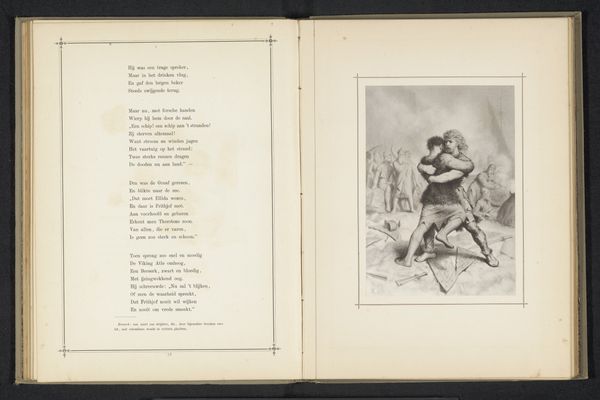
Fotoreproductie van een schilderij van een scene uit Der Trompeter von Säkkingen, voorstellende Maria die de trompetter een bloemenkrans op doet before 1890
0:00
0:00
Dimensions: height 125 mm, width 97 mm
Copyright: Rijks Museum: Open Domain
Curator: This photographic reproduction, taken before 1890, depicts a scene from “Der Trompeter von Säckingen.” It presents us with an interesting intersection of media: photography capturing a painted or drawn image, printed in a book alongside text. What grabs you first? Editor: I'm struck by the staging. It’s like a theatrical tableau vivant, emphasizing the romanticized narrative of the original scene. I'm curious, how does the act of reproducing it via photography change our understanding? Curator: Precisely! Think about the process. Photography here isn't about capturing reality directly, but reproducing a crafted image. What does that tell us about the intent? It's mass production, a way of disseminating this romanticized vision to a wider audience. The material itself – the paper, the ink, the photographic emulsion – it all speaks to the accessibility and democratization of art in that period. It makes one consider the conditions in which such images circulated and were consumed. Editor: So the photograph functions as a medium of exchange, mediating the original artistic creation and the viewer's access to it. It becomes about the consumption and distribution of art? Curator: Absolutely. Consider the labour involved. From the original artist, the photographer, to the printer. Each step is a form of labour that shapes our understanding. This romanticism is no longer just about knights, fair ladies, but also about new markets and technologies. Editor: So, this photo is much more than just a copy of a painting – it’s a reflection of 19th-century media production. I appreciate you helping me connect with the material means of its creation and consumption. Curator: It challenges our traditional assumptions regarding art. High art can come from common manufacturing, transforming accessibility to these kinds of works. I find myself with a different, richer, appreciation.
Comments
No comments
Be the first to comment and join the conversation on the ultimate creative platform.
